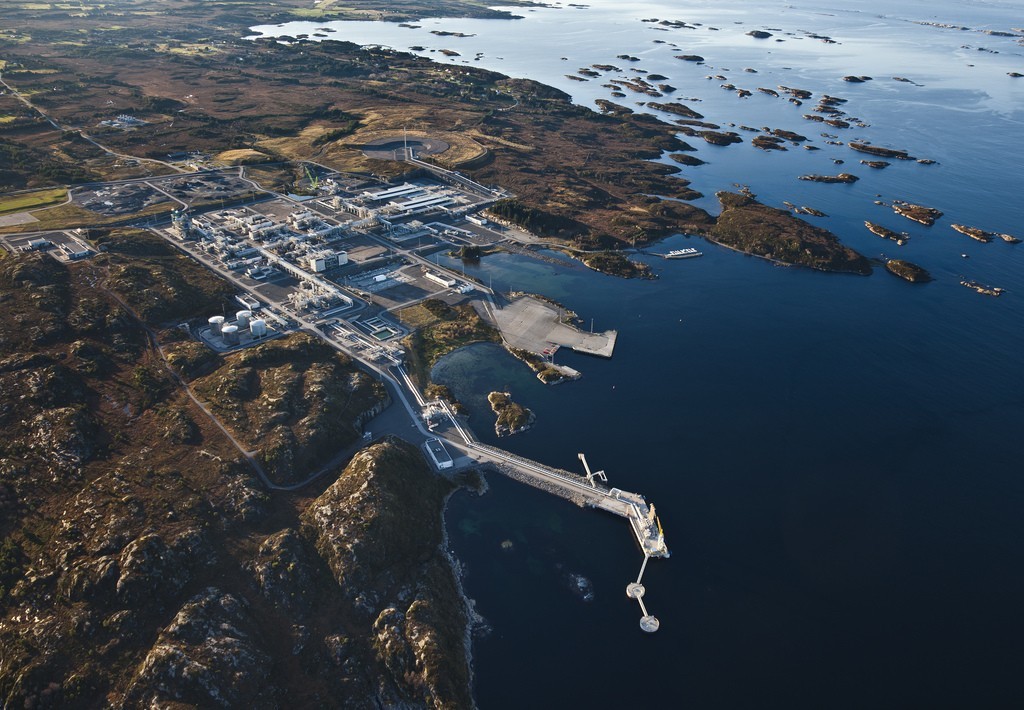
Norway’s natural gas pipeline manager and the nation’s power grid are at odds over whether a solitary electricity cable across 75 miles of fjords and rugged mountains is enough to ensure supply to a processing plant that helps warm millions of European homes every winter.
As the government held an open hearing yesterday (Tuesday) on how to boost the connection, gas network operator Gassco says plans by power grid Statnett to strengthen the link from Viklandet to Gossa Island in western Norway are insufficient and underestimate the risk of shutdowns.
Statnett argues a full backup cable costing NK1.75billion isn’t warranted, even after more than three times as many outages in the past eight years than anticipated.
The dispute centers on Nyhamna, a gas processing plant being expanded with freight-train sized modules to allow it to supply about 22 million European homes, as Norway is set to export an unprecedented amount of the fuel to Europe this year.
The region’s biggest gas producing country plans to invest NK57billion in fields and pipes to allow Nyhamna to ship 20% more gas to the U.K. from 2018.
“This kind of plant needs another connection, and it needs it as soon as possible,” Thor Otto Lohne, executive vice president and chief financial officer of Gassco, said in a phone interview from Kopervik, Norway. “There have been more power outages than assumed when the site was built.”
The expansion of Shell’s Nyhamna, and one of three processing plants in the nation that’s built an $860 billion fortune from oil and gas, will help ensure Norway keeps gas flowing to Europe amid increasing competition from liquefied natural gas from as far away as Australia.
Shell asked Statnett for NK659million in compensation for loss of income related to power halts at Nyhamna through 2012. It hasn’t yet submitted figures for 2013 and 2014 as it awaits a ruling from Norwegian energy directorate NVE.
The company didn’t raise any concerns regarding the grid manager’s latest proposal and was hoping for a quick decision that would mean the gas plant would get a more robust power supply soon, Kitty Eide, a spokeswoman for Shell in Norway, said.
The island is supplied by a high-voltage line, traversing the Meisal mountains on pylons sitting as high as 613 meters above sea level. A lower-voltage link is used as backup, which isn’t enough to allow full output at Nyhamna when the main connection goes down. A failure in external power supplies in May caused U.K. supplies from Nyhamna to halt for about a day, causing same-day gas prices to jump as much as 2.3%.
While Gassco seeks a second link with the same capacity to ensure supply, Statnett prefers a step-by-step approach that first strengthens the smaller cable, holding off on the investment needed for a second high voltage cable until more gas fields are connected to Nyhamna.
Statnett presented its proposal to the Norwegian Ministry of Petroleum and Energy at Tuesday’s open hearing in Molde, about 30km from Nyhamna. Participants from Gassco, Statoil AS, Shell, DNV GL AS and local grid company Istad Nett AS also presented their views before the ministry gives its opinion sometime after December 10.
The power supply problems in Norway affect gas prices in Europe, including on the UK’s National Balancing Point and the Dutch Title Transfer Facility.
Norway exports about NK200billion a year of gas, about 23% of which through Nyhamna, 48% through Kollsnes and 29% through Kaarstoe, the only site with its own power plant.
“Nyhamma and Kollsnes have closed on numerous occasions during the last years and every time NBP and TTF had short-term bullish responses,” said Gustaf Sundelius, who manages gas contracts for clients at energy trader Modity AB in Lund, Sweden.
“The risk is that continued unreliability from Norwegian production over time will lower demand for Norwegian gas, spurring a European diversification towards other alternatives.”
Recommended for you
